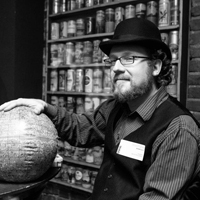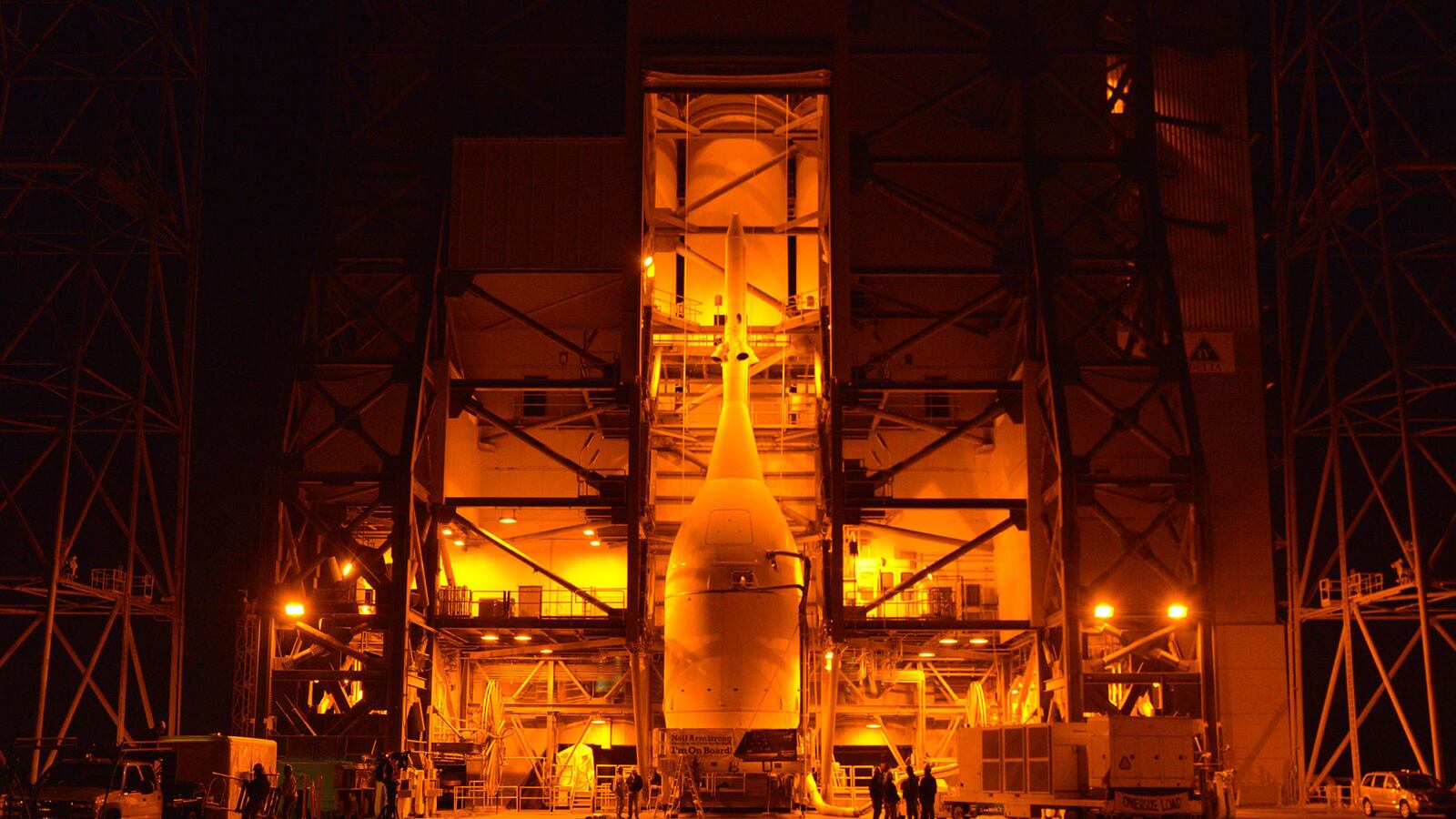What would it take to carry people to the Moon, or Mars, or an asteroid? Currently no spaceship is capable of taking humans beyond Earth orbit, but NASA plans to change that with the Orion capsule. Just after 7am US Eastern time on Thursday, a rocket carrying a test version of the Orion spacecraft will launch from Cape Canaveral in Florida. This marks the first significant test of what NASA engineers hope will be the next generation of crewed spaceflight—and possibly the prototype of the ship carrying the first people to Mars.
The capsule in the Exploration Flight Test 1 (EFT-1) won’t carry any humans, but it will check a number of crucial systems that need testing before any people fly in the spacecraft, including the all-important reentry into Earth’s atmosphere. During the flight, it will soar higher than any Space Shuttle or Soyuz capsule, to check the radiation exposure astronauts would experience farther from Earth.
Orion will orbit Earth twice before splashing down off the California coast. The total test will take roughly 4-1/2 hours, during which NASA engineers will collect data on how the capsule handles its flight and environment. The flight will also carry symbolic items, such as Cookie Monster’s cookie, poetry, and a fragment of a fossil bone from the dinosaur Tyrannosaurus rex.
All of this is necessary because Orion will go farther than any crewed spacecraft since the end of the Apollo program in the 1970s. For 30 years, spaceflight was focused on projects like the Space Shuttle, a reusable space plane designed to operate in low Earth orbit. While that was fine for building and servicing projects like the Hubble Space Telescope or the International Space Station, the Shuttle was simply not designed to fly higher.
Orion looks and behaves a lot like the old Apollo capsules: it is built on a similar modified cone shape, with a flat bottom to slow it down as it enters the atmosphere. But it draws on lessons learned from the last 40 years, and of course includes up-to-date technology. (Can you imagine flying to Venus in an Apollo-era ship based on the same technology, as some NASA people proposed?) It’s these new technologies that will be tested by EFT-1.
The most dangerous time for any spaceship is the launch: that’s when many things can go wrong. After all, it involves attaching an ensemble of equipment designed to support delicate living creatures—that is, us—and do scientific tasks to the top of a rocket, which is basically a gigantic explosive device. EFT-1 will send Orion to space atop a Delta IV Heavy rocket, which consists of a main rocket and two boosters. However, for real long-distance spaceflights, NASA plans to use the Space Launch System (SLS), a larger and more powerful rocket than any yet developed. The combined Orion/SLS test, designated Exploration Mission 1 (EM-1), is not scheduled yet.
Another particularly dangerous time is reentry: Orion will hit the top of Earth’s atmosphere at a blistering 20,000 miles per hour (32,000 kilometers per hour, or 8,900 meters per second). The goal is to slow the spacecraft down sufficiently to allow parachutes to deploy, leading to a gentle splashdown in the ocean, while keeping the temperature inside the capsule low enough to avoid cooking the astronauts. It’s a careful balance of conditions, so technicians will be monitoring EFT-1’s reentry and parachute deployment very carefully.
Finally, Orion will fly higher than the Space Shuttle and international crewed missions, reaching 3,600 miles (5800 kilometers) above Earth. That’s still pretty close to home—for comparison, the Moon is an average of 239,000 miles (384,000 kilometers) away—but it’s high enough to expose the capsule to significant levels of high-energy particles from the Sun, which are a concern for astronauts during long-distance spaceflight. The Apollo missions traveled farther than EFT-1 will go, but were relatively short flights. Thinking of longer journeys to Mars or an asteroid would require careful measurement of conditions.
The Orion capsule itself is a little roomier than the old Apollos; it carries up to four crewmembers in a cabin 316 cubic feet in volume (8.9 cubic meters). A lot of the necessary equipment —life support and electrical power generation, especially— is in a service module attached to the crewed capsule. The service module also deploys four arrays of solar panels. This module will detach before reentry.
Many of Orion’s systems have already been tested, including splashdown and mission-abort capabilities. (I watched one of the splashdown tests at NASA’s Langley facility a few years ago.) However, the real proof of Orion’s abilities will be checked for the first time with EFT-1. With a successful flight, NASA will turn its attention to bigger and more ambitious tests—including someday a flight with astronauts (if not Cookie Monster) aboard.






